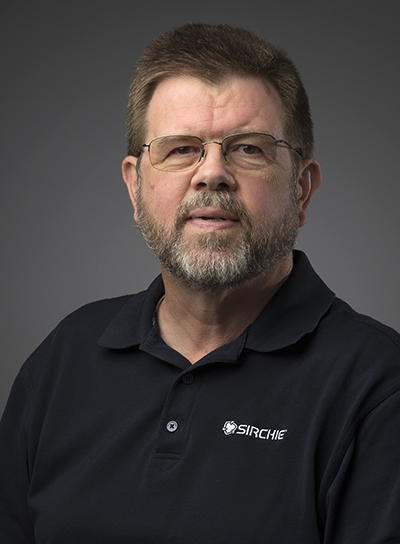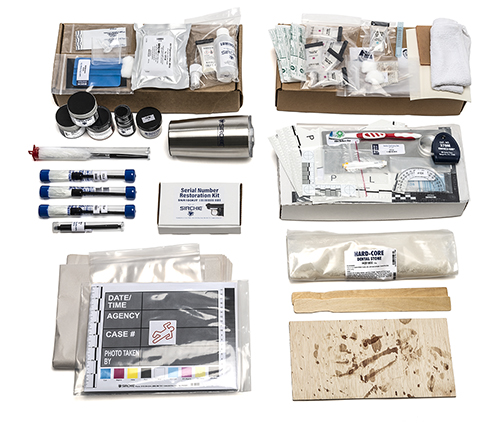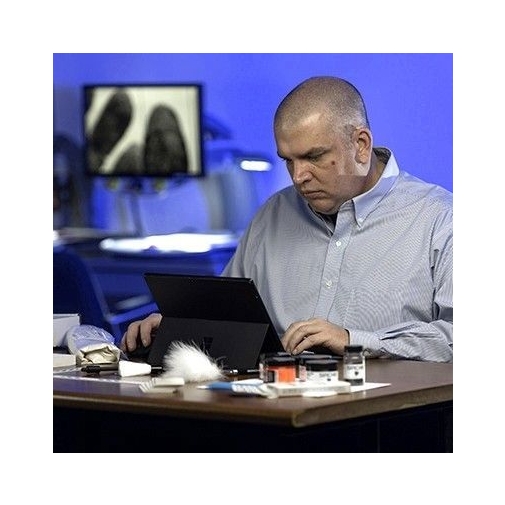- About Us
- Support
- Privacy Policy
- Contact us at +1 919-554-2244 or 1-800-356-7311
This class will be held online via Zoom from July 22-26, 2024 (starting at 10:00am through 5:15pm).
We’ve gone Virtual!
We are pleased to bring our Evidence Collection Accelerated Training Program to the comfort and safety of your home or office. This new live and interactive online training delivers the best possible instructive experience during these challenging and uncertain times. Classes are taught by the same experienced, knowledgeable instructors that teach at our state of the art facility in Youngsville, NC. You will learn the same techniques you need to accomplish your mission: scientific methods of collection, identification, evaluation and preservation of physical evidence.
Our virtual classes will be offered quarterly. Pricing includes a starter kit that will have all the items you need to participate in the hands-on portion of our training. We hope to "see" you soon!
All participants must have camera capability in order to attend class.
You need to attend this program if:
- You process crime scenes
- You want to learn more about the best tools and techniques used to process crime scenes
- You want to find as much evidence as possible at the crime scene


Your Instructor
David Alford is a retired FBI Special Agent with 21 years of experience investigating violent crimes, terrorism and other cases. He was one of the founding members of the FBI Evidence Response Team (ERT) and conducted crimes scene searches on domestic and international violent crimes and bombings, including the Polly Klaas kidnaping and murder, the Unabomber’s bombing sites and cabin and the 9/11 Pentagon scene. The international crime scenes included bombings in Doha, Qatar and Beirut, Lebanon, and the murder of specialized task force members in Mexico City, Mexico.
He worked in the Denver and San Francisco FBI field offices and completed his FBI career at Quantico in the FBI Lab ERT Unit. During the 6 years in the FBI Lab, he was primarily responsible for overseeing and teaching basic and advanced crime scene courses throughout the US and many other countries.
In the 6 years before the FBI, he was a Forensic Serologist, Hair and Fibers Examiner and Bloodstain Pattern Analyst for the Kentucky State Police Crime Lab. He was a member of the Midwestern Association of Forensic Scientists. He also provided training at national forensic conferences. Throughout his career he has testified in state courts as a Forensic Expert in Serology, Hair and Fiber Analysis and Bloodstain Pattern Analysis and in state and federal courts as an FBI Agent.
After retiring from his law enforcement duties in December 2005, David taught crime scene courses around the world on behalf of the FBI and US State Department.
David began his career with Sirchie in January 2006, as a sales representative and instructor for Sirchie’s RUVIS and Alternate Light Source (ALS) products. He continues with these opportunities but now is primarily a Crime Scene Instructor for Sirchie’s Forensic Investigation Technology courses. He teaches local, state and federal officers by teaching live hands-on virtual classes and by traveling throughout the US to teach in-person. David loves teaching and providing law enforcement officers with hands-on opportunities to develop their skills at finding the physical evidence needed to solve cases and make their communities a safer place to live.


VCT100KIT Contents:
1- Tervis Tumbler, 20 oz.
1- Biofoam Impression Kit
5- Tissue Paper, #15 weight
1- Blood Evidence on Plywood
1- PIC001 Photo Scale/ID Card, 8 1/2” x 11”
1- Crime Scene Documentation Forms
2- 131WL1 Hinge Lifter, 2” x 4”, white
6- FC343 Reversible Backing Cards, 3” x 5”
1- 101L Silk Black Fingerprint Powder, 2 oz.
1- 107L Copper Fingerprint Powder, 2 oz.
1- SB201L Silver/Black Fingerprint Powder, 2 oz.
1- M114L Black Magnetic Fingerprint Powder, 1 oz.
3- 122L Standard Fiberglass Brush
1- 123LW Marabou Feather Brush, white
1- 125L Magnetic Powder Applicator
1- 127LW Rubber/GEL Lifters, 2” x 4”, white, 12 ea.
1- 145L 1.5” Frosted Lifting Tape
1- SBQ100 Fingerprint Lifting Squeegee
1- SNR100K Serial Number Restoration Kit
1- PPS800 Forensic L-Scale, 105mm x 105mm
1- PPS600 Reversible Forensic L-Scale, 300mm x 150mm
1- LTF200PR Zero Edge Protractor
1- Hemastix Blood ID Reagent Strips, 10 ea.
1- Toothbrush
2- Cotton Balls
2- Ziptop Bag, 9” x 12”
1- Orange Acrylic Square, 4” x 4”
1- 379M Attached case Magnifier
3- SDM100E Disposable Evidence Markers, inches
2- Wooden Paint Stirrers
1- Terry Cloth Towel
6- Cotton-Tipped Swabs
1- GLT101W GELifters, 5.2” x 7.2”, white, 10 each
1- HCB1002 Hard-Core Dental Stone, 2 lbs.
1- KCP247C Sterile Water, 3ml vial
1- OSTBK100 Blood Evidence Samples on paper
1- Luminol4 Blood Search Reagent
1- CNA1 Cyanoacrylate Liquid
1- Stainless Steel Slab, 4” x 10”
5- PBID1005 Blood ID Tests, Kastle Meyer Reagent
1- PBID2001 Blood ID Tests, McPhail’s Reagent
More Information
| Curriculum | Crime Scene Evaluation and DocumentationThe various types and categories of physical evidence are reviewed with the emphasis being placed on the proper procedures for securing the crime scene and preparing to collect evidence. Fingerprint PowdersThe proper use of oxide, metallic and magnetic powders is discussed. Students will develop latent prints on a variety of surfaces such as porous and non-porous, glass and polished metals. Photographic techniques are covered along with the use of various print lifting devices such as tape, hinge lifters and rubber lifters. Processing Latent Prints with ChemicalsDuring this segment, students will develop latent prints on paper and cardboard surfaces, utilizing iodine fuming, ninhydrin and silver nitrate. Chemical fixatives and removers will also be covered as well as the chemical development of latent blood prints. A second period is devoted to the development of latent prints using cyanoacrylate (superglue) fuming techniques. Students will also learn the latest methods of locating and photographing latents without powder or chemical processing with Sirchie’s Krimesite™ Imager. Basic Photography and Crime Scene SketchingVarious procedures for taking crime scene photographs are discussed as well as the proper techniques for constructing crime scene sketches. Physiological FluidsStudents learn to identify physiological fluid stains, including blood and seminal fluid, using various testing methods. Students will use chemical reagents, such as luminol, to detect invisible traces of blood. The proper collection and handling of evidence in rape cases and sex crimes will be covered. Firearms Residue CollectionStudents will learn the proper methods for collecting primer and gunpowder residues from the suspected shooter’s firing hand. Tire, Footprint, Toolmark CastingImpression evidence types and their value in criminal investigation will be reviewed. Students will have the opportunity to experience first hand the casting of footwear and tire impressions with various materials. In addition, casting of tool marks and other impressions will be demonstrated. Course Review and Final ExaminationA comprehensive examination will be given at the end of the course, covering materials discussed and demonstrated. |
|---|


